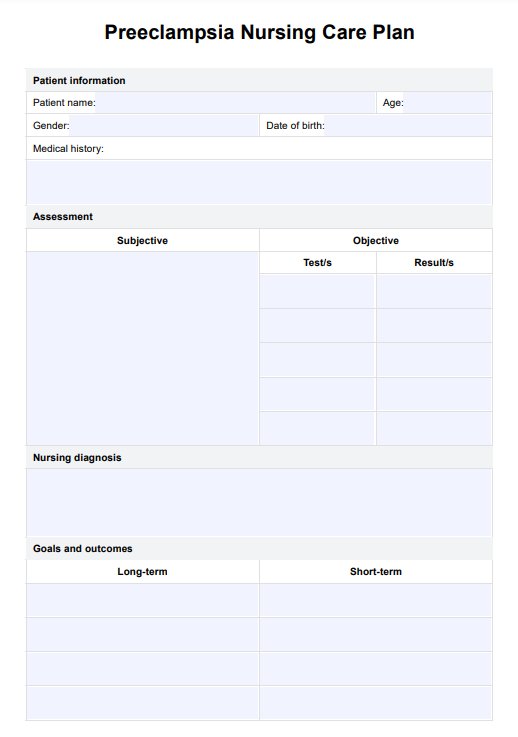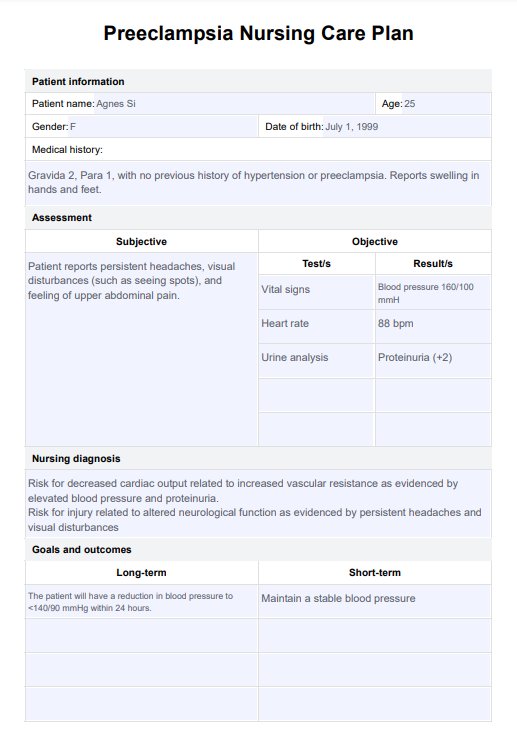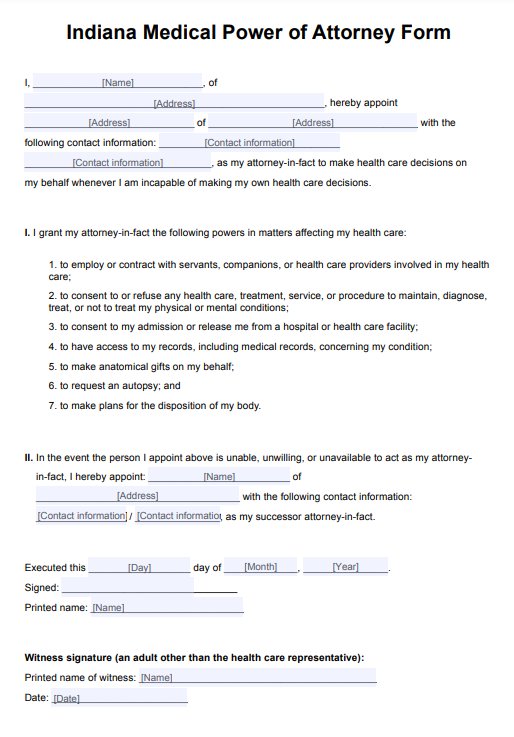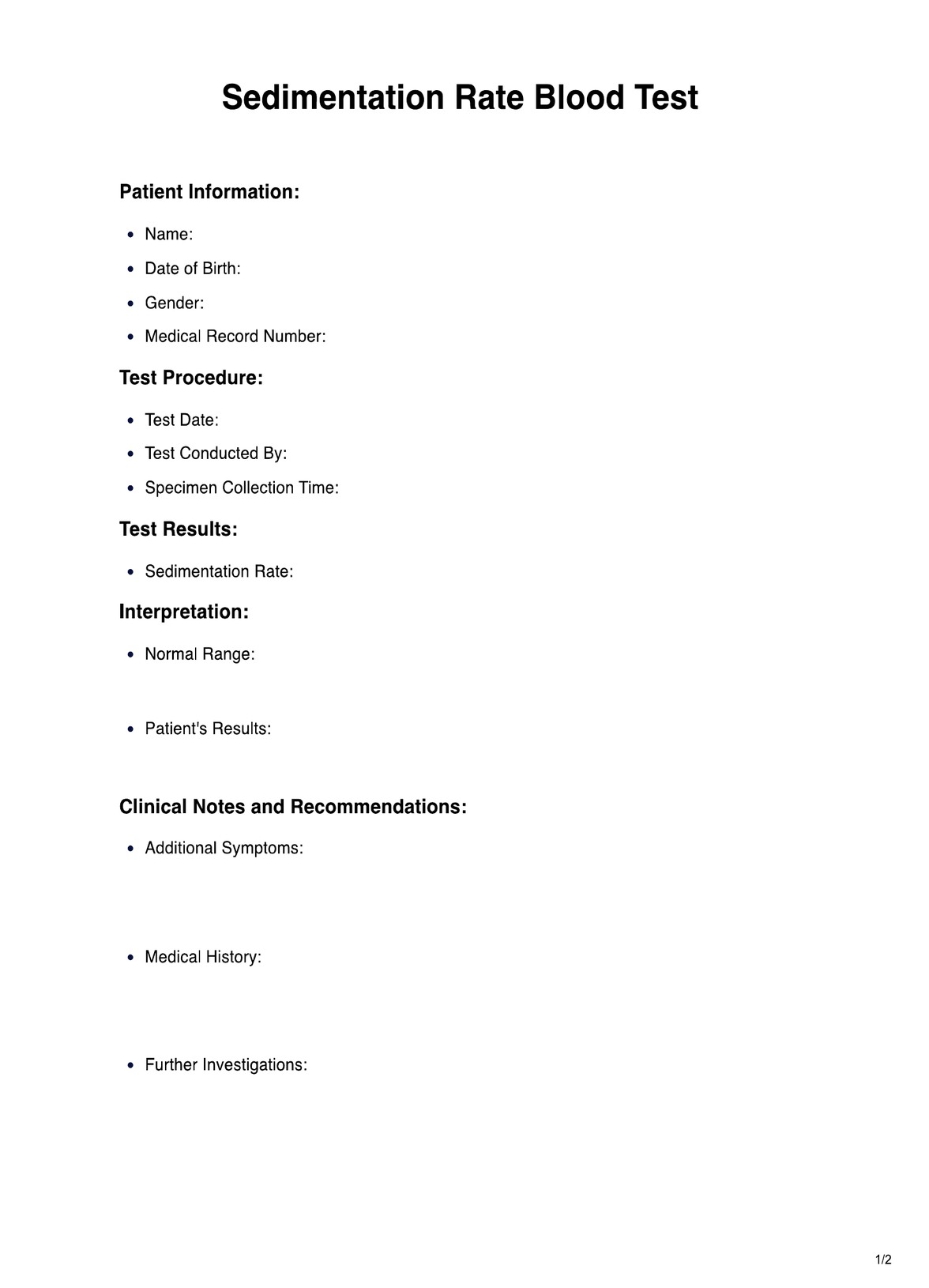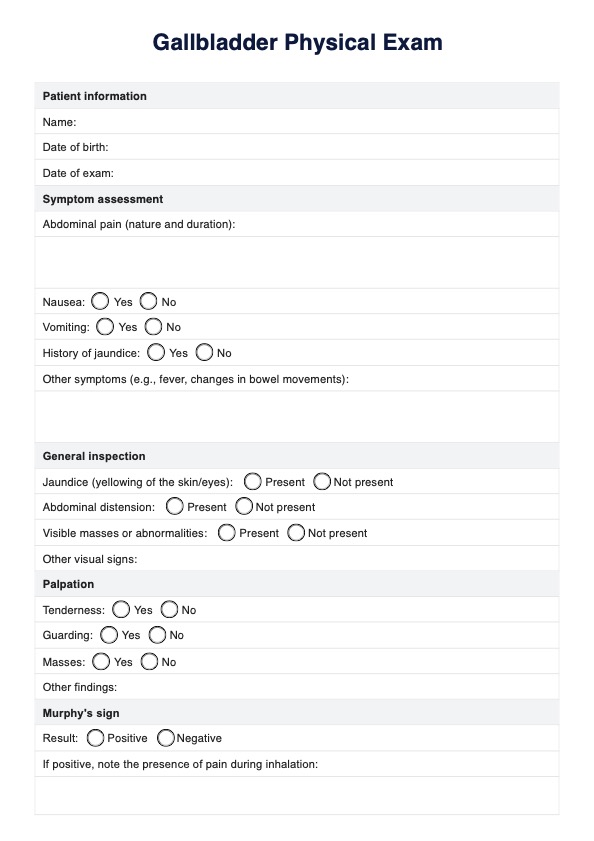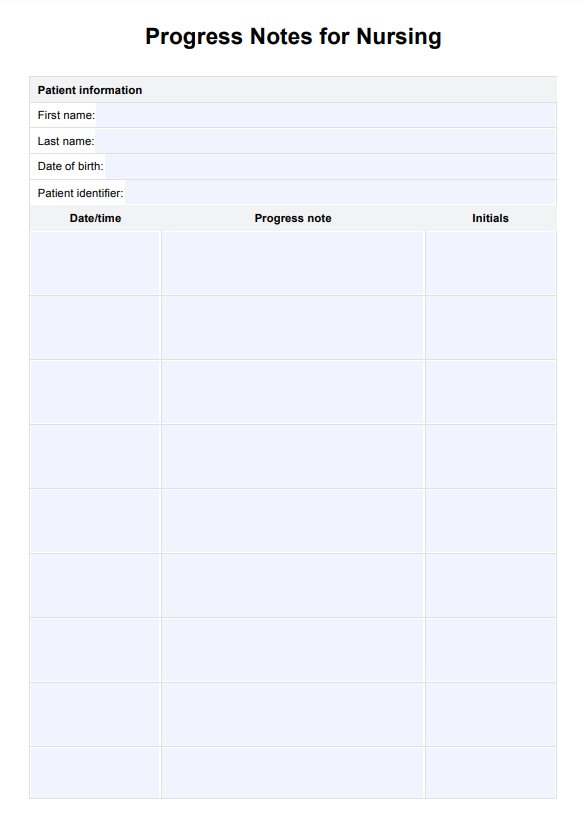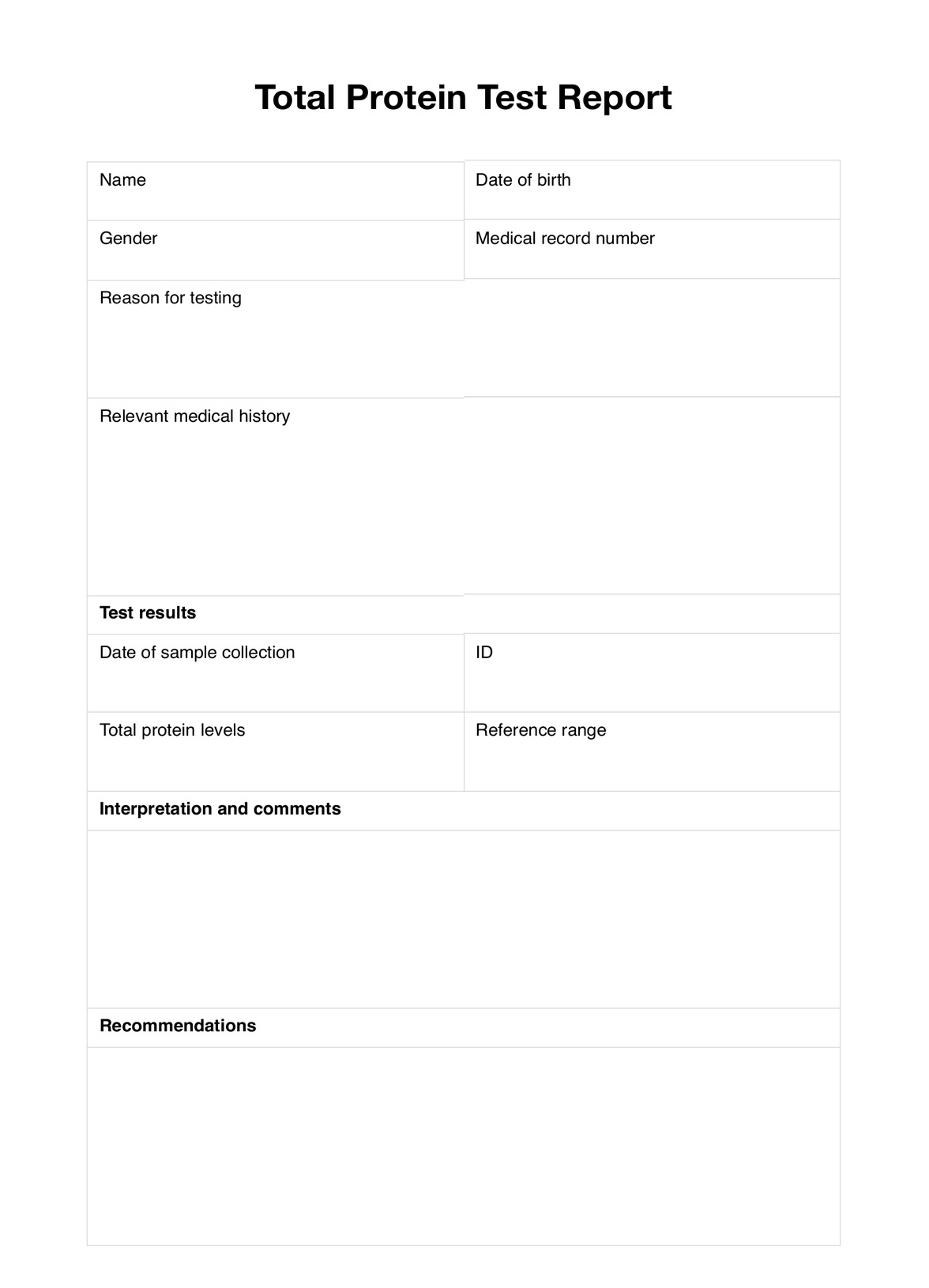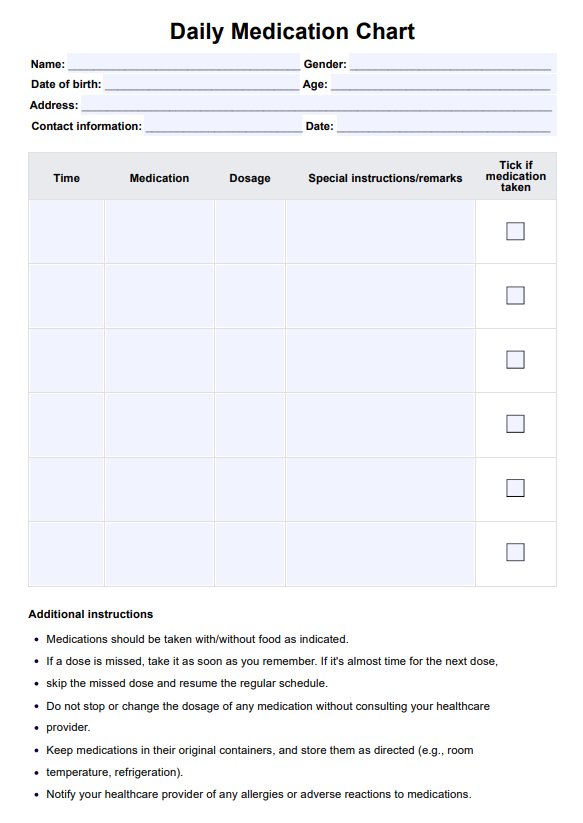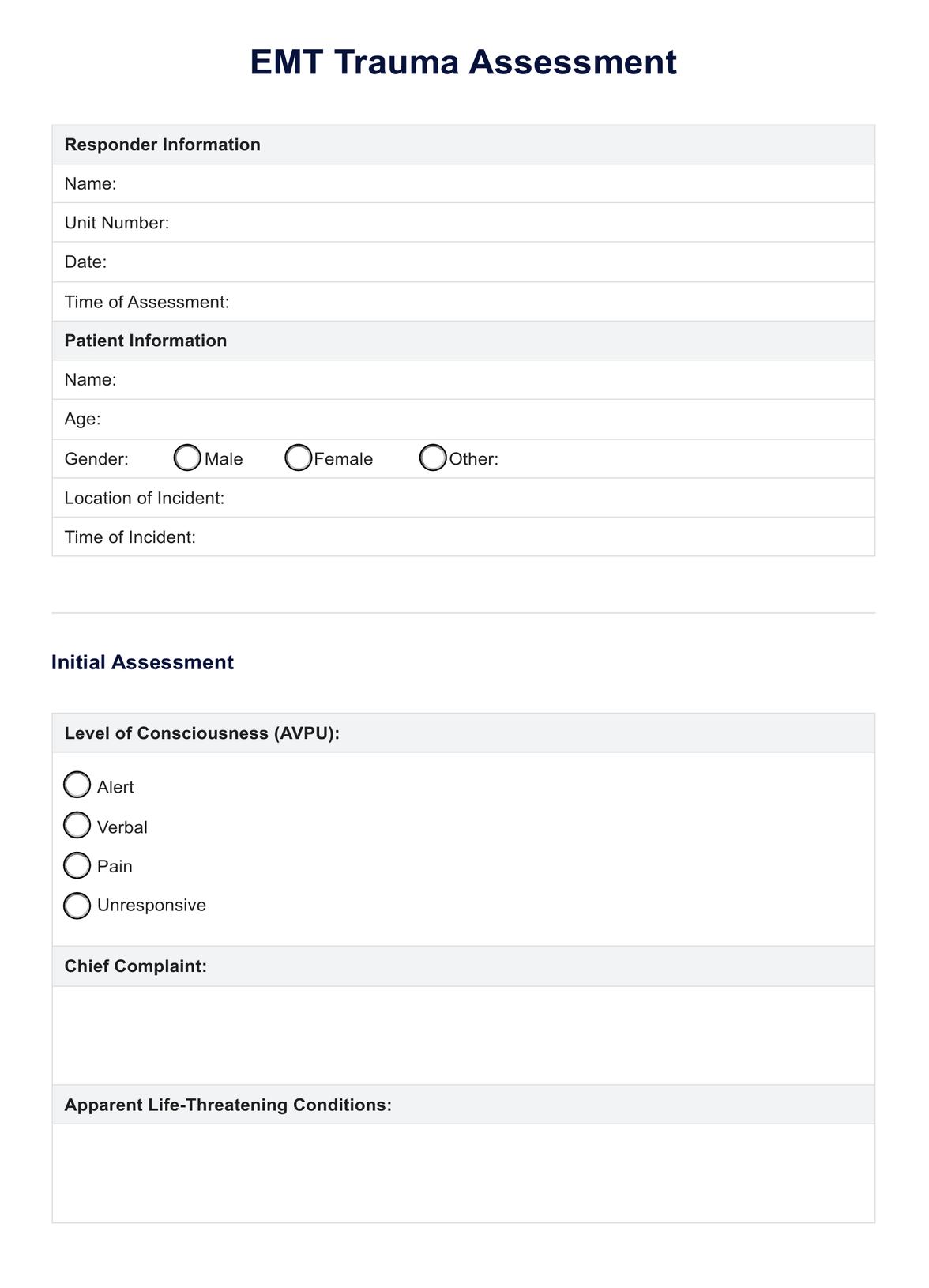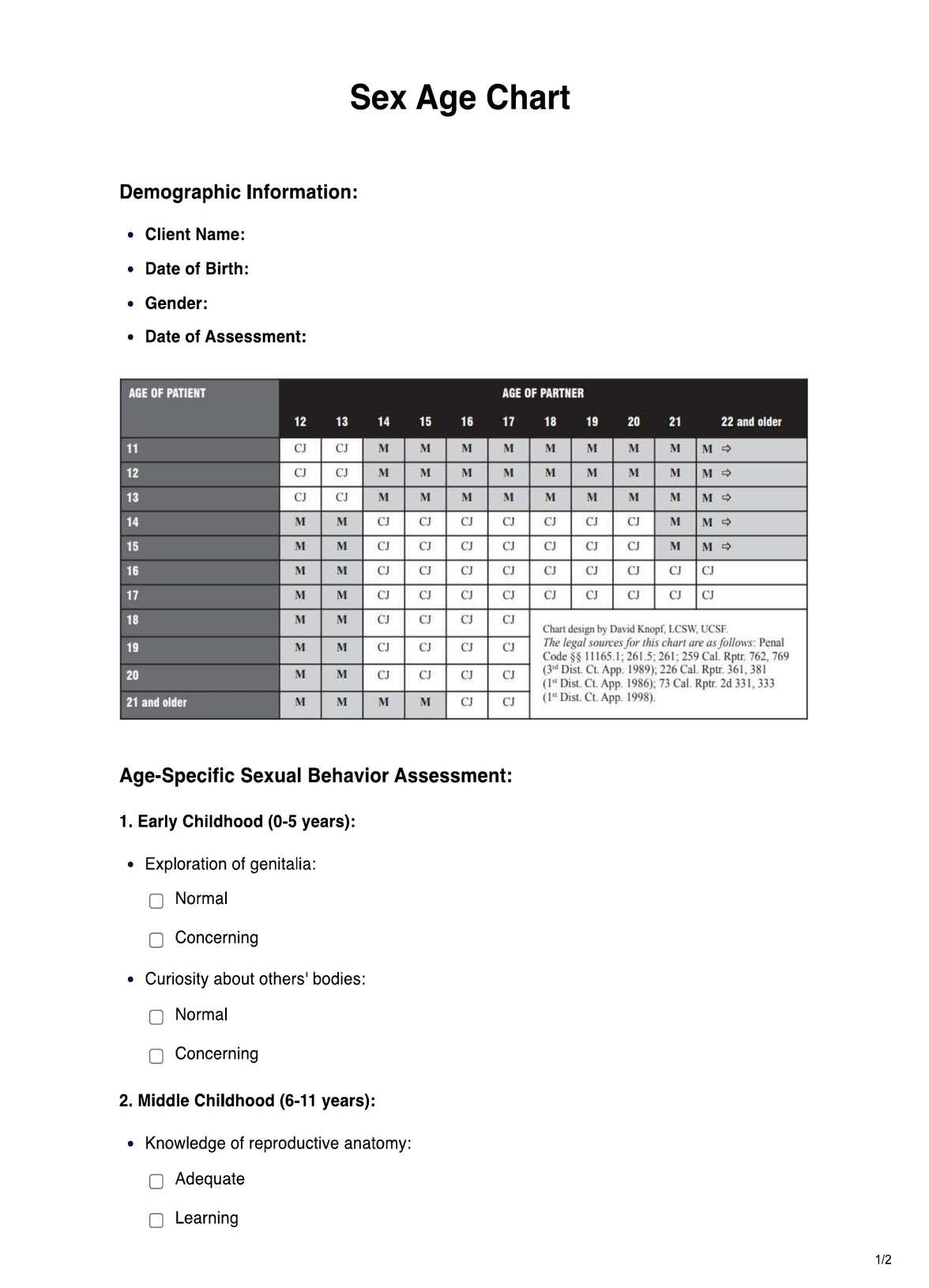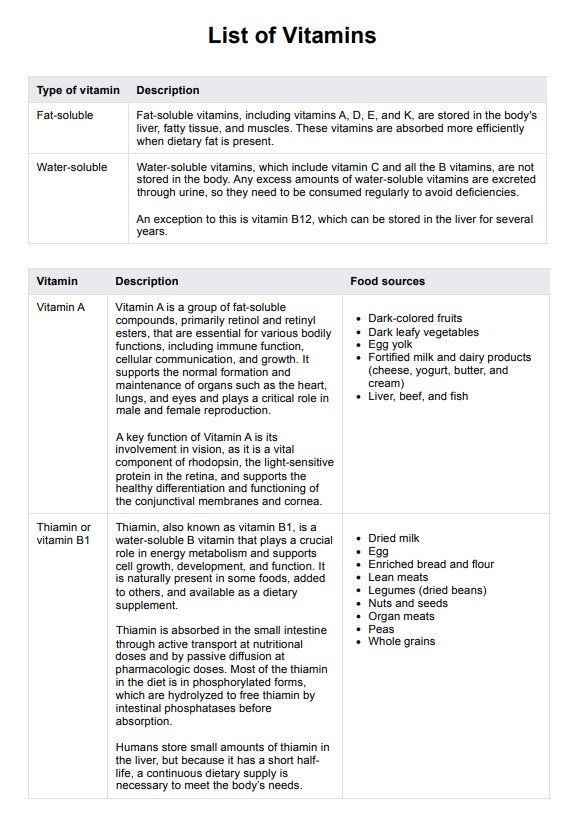Preeclampsia Nursing Care Plan
Optimize maternal and fetal health with our Preeclampsia Nursing Care Plan Template for effective management and care.


What is preeclampsia?
Preeclampsia is a pregnancy complication characterized by elevated blood pressure and signs of damage to another organ system, often the kidneys. It typically emerges after the 20th week of pregnancy and is particularly concerning due to the development of pregnancy-induced hypertension, which can manifest as both systolic and diastolic blood pressure elevations. Severe preeclampsia requires careful blood pressure monitoring to prevent complications that could affect fetal well-being and maternal health.
If left untreated, it can progress to more severe conditions such as gestational hypertension, increasing the risk for serious health issues for both the mother and the baby. Early detection and management of high blood pressure during pregnancy are crucial to ensure a healthy outcome.
Preeclampsia Nursing Care Plan Template
Preeclampsia Nursing Care Plan Example
What is a Preeclampsia Nursing Care Plan Template?
A Preeclampsia Nursing Care Plan Template is a structured framework that nurses use to assess, plan, implement, and evaluate care for patients with preeclampsia. This template acts as a guide for nurses to deliver comprehensive and individualized care tailored to each patient's specific needs.
Typically, the template includes sections for assessment, diagnosis, goals, implementations, interventions, rationale, and evaluation. Nurses can utilize this template to document patient data, identify potential risks, and develop a nursing care plan aimed at managing symptoms and preventing complications.
Carepatron offers a user-friendly and free Preeclampsia Nursing Care Plan Template designed to help nurses provide quality care to patients with preeclampsia. This template can also be customized to meet the unique needs and circumstances of each patient.
How does it work?
Follow these steps to effectively utilize our printable Preeclampsia Nursing Care Plan Template:
Step 1: Obtain the yemplate
Download the Preeclampsia Nursing Care Plan Template using the link provided on this page. It is also accessible through the Carepatron app.
Step 2: Gather patient information
Before filling out the template, collect all pertinent information about the patient's medical history, current health status, medication regimen, and any conditions related to preeclampsia. Be sure to include vital signs, blood pressure readings, and relevant laboratory results.
Step 3: Complete the care plan
Fill in the template’s sections with information derived from your patient assessment. Use specific details to identify the patient's risk factors, potential complications, and the interventions or preventive measures that should be implemented.
Step 4: Regular reevaluation
As the patient’s condition changes, it is crucial to regularly reassess their risk of complications associated with preeclampsia and adjust the nursing care plan as needed. This continuous evaluation will ensure that effective strategies are in place to manage their condition effectively.
When would you use this template?
Our free Preeclampsia Nursing Care Plan Template is used in various clinical settings, particularly for managing maternal and fetal morbidity. It is commonly utilized in:
- Hospital settings: For patients admitted with preeclampsia, especially those with severe features or complications like HELLP syndrome.
- Outpatient clinics: In prenatal care settings for ongoing monitoring and management of women with mild preeclampsia.
- High-risk pregnancy units: For close monitoring and management of women with a high risk of developing preeclampsia, such as those with a history of the condition or other risk factors like chronic hypertension or renal disease.
- Labor and delivery units: To guide the care of women with preeclampsia during labor and delivery, including decisions regarding the timing and mode of delivery based on maternal and fetal status.
The template ensures a standardized approach to care, facilitating early identification of worsening conditions, and guiding timely interventions to prevent complications. By using this template, healthcare providers can ensure that preventive measures are in place, reducing the likelihood of severe outcomes for both the mother and the fetus.
Components of an effective Preeclampsia Nursing Care Plan
An effective nursing care plan for preeclampsia is crucial to ensure the safety and well-being of both the mother and the fetus. Below are the essential components that should be included in a comprehensive nursing care plan for preeclampsia:
Assessment
The assessment phase of a preeclampsia care plan starts with a thorough evaluation of the patient’s health. This includes collecting both subjective and objective data about the patient’s medical history, focusing on any past hypertension or pregnancy complications. Nurses should regularly check vital signs, especially blood pressure, and monitor for symptoms like edema, headaches, and visual changes.
Nursing diagnosis
Based on the assessment, nurses should analyze the collected data to identify nursing diagnoses specific to preeclampsia. These diagnoses will guide the development of targeted interventions. For instance, a common nursing diagnosis for preeclampsia is “risk for injury related to hypertension and edema.”
Goals and outcomes
The next step in developing a care plan is establishing measurable goals and expected outcomes. These should be individualized based on the patient’s condition, preferences, and needs. Examples of potential goals for preeclampsia include maintaining stable blood pressure levels, reducing edema, preventing seizures, and ensuring fetal well-being.
Nursing interventions
Nursing interventions are specific actions that nurses take to achieve the established goals and outcomes. In the case of preeclampsia, these may involve administering medications, such as antihypertensives or magnesium sulfate to
Interventions or Implementation
Nursing interventions are crucial actions aimed at managing preeclampsia and promoting maternal and fetal health. This may involve monitoring vital signs frequently, educating the patient on recognizing signs of worsening preeclampsia, and ensuring adequate fluid intake.
Rationale
For effective nursing care, it's crucial to understand the rationale behind interventions. Nurses should rely on evidence-based practices to inform their decision-making. For instance, regularly monitoring blood pressure can help detect early signs of worsening preeclampsia, enabling timely interventions that may prevent complications.
Evaluation
The final component of a nursing care plan for preeclampsia is the evaluation phase. Nurses must consistently assess the patient’s response to interventions and modify the care plan as necessary. This ongoing evaluation is crucial for determining the effectiveness of the plan and making any required adjustments.
Results of an effective care plan for preeclampsia
Effective implementation of a Preeclampsia Nursing Care Plan typically results in the successful management of the condition and the prevention of its complications. Key outcomes include:
- Stabilized maternal blood pressure: Achieving and maintaining blood pressure within a safe range is a primary goal, reducing the risk of severe complications like stroke or eclampsia.
- Prevention of maternal and fetal complications: Through careful monitoring and management, the risk of complications such as HELLP syndrome, placental abruption, and fetal growth restriction is minimized.
- Informed decision-making: The care plan aids in making informed decisions regarding the timing and mode of delivery, balancing the risks to the mother and fetus.
- Patient education and empowerment: Educating patients about preeclampsia, its symptoms, and self-care measures empower them to participate actively in their care and seek help when needed.
These results indicate that the nursing interventions are effective in managing preeclampsia and protecting the health of the mother and baby. Regular reassessment and adjustment of the care plan ensure it remains relevant to the patient's changing condition and needs.
Commonly asked questions
Preeclampsia Nursing Care Plan Templates are used in various healthcare settings for managing pregnant women diagnosed with preeclampsia.
Preeclampsia Nursing Care Plan Templates guide healthcare providers in implementing and monitoring interventions to manage preeclampsia.
Nursing interventions for managing decreased cardiac output in preeclampsia include monitoring vital signs closely, administering prescribed medications to help maintain blood pressure, and positioning the patient to enhance blood flow.
Nurses can assess blood flow in pregnant women with preeclampsia by evaluating peripheral circulation, measuring blood pressure, and monitoring fetal heart patterns, which provide insight into placental perfusion and overall cardiac output.
Fluid management is crucial in preeclampsia care, as it can help prevent hypovolemia and assist in maintaining blood pressure. Careful monitoring of fluid intake and output is necessary to ensure adequate circulation without overloading the patient.

.jpg)
